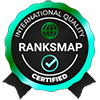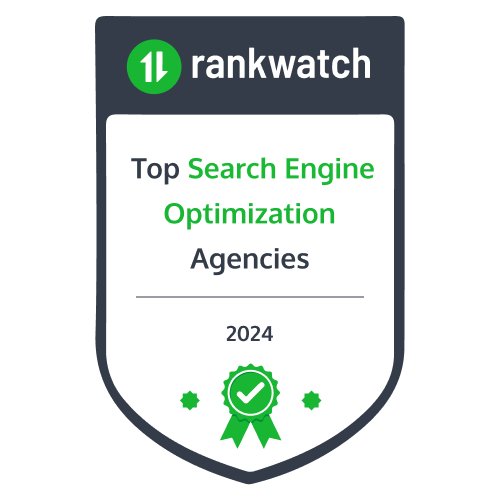Search engine optimization (SEO) is an important part of any online business, but it’s particularly important for travel websites. If you’re trying to attract visitors looking for the best deals on hotels or plane tickets, you need to make sure they find your website first. Below are some strategies I’ve used to improve SEO on my own travel blog:

Search engine optimization (SEO) doesn’t have to be hard.
One of the most common misconceptions about SEO is that it’s a difficult process. In reality, it can take time and effort to get your website ranked where you want it to be in search engines, but there are plenty of resources available to help you along the way.
If you’re looking for an easy fix for getting more traffic and conversions on your site, then SEO isn’t going to be a good fit for you right now. However, if you’re willing to invest some time in learning how Google works–and why they rank certain pages over others–then this guide will teach all of those things!
Optimize for SEO.
SEO, or search engine optimization, is a long-term strategy. It’s not just about keywords and links; it’s about creating a website that is easy for search engines to crawl and understand. In addition to technical SEO best practices like correctly using HTML tags and including keywords in your content (but not stuffing them), you should also focus on writing compelling copy that appeals to your target audience.
When planning out your site architecture and deciding what content will go where, keep user experience at the forefront of your mind: does this page answer the user query? Does it provide enough value? Can I improve upon what it offers by adding more information or more images? This can be difficult when you’re juggling multiple types of pages–for example, those dedicated specifically towards hotel bookings vs those providing general information about destinations–but being aware of how each piece fits together will help ensure you don’t miss any opportunities along the way!
Optimize your title tags.
Title tags are the most important on-page SEO element. They determine how your website will be listed in search results, so it’s crucial that you optimize them for maximum visibility and clickability.
The first thing to keep in mind is that each page should have its own unique title tag–don’t repeat keywords from one page to another! For example, if you’re optimizing for “travel,” don’t just put that word into all of your titles; instead write out something like “Dubai parks and resorts discount tickets” or “Traveling with Kids?”
You also want to include your target keywords as often as possible without being spammy (and without overstuffing). Make sure they’re spaced out appropriately so they’re readable by humans–not just search engines–and check out this post by Yoast if you want more tips on how best use these elements together
Optimize your Meta descriptions.
Meta descriptions are the written snippets that appear in search results. They’re an important opportunity to entice users with your content, and they should be unique for each page on your website.
Using meta descriptions can help you increase traffic by up to 9%, according to a study conducted by Statistica (and confirmed by many others). Here are some tips:
- Make sure they’re concise and relevant–don’t use more than 150 characters!
- Include keywords related to what people are searching for so that Google can understand what your page is about before clicking through.
Create unique URLs for each page of your site.
- Use a naming convention that is easy to remember.
- Make sure your URLs are short and sweet.
- Avoid using words like “click here” or “read more” in your URLs, as these can have negative effects on search engine rankings. Instead, try hyphens instead of underscores (e.g., [website-name/page-title]) and dashes instead of spaces between words (e.g., [website-name/ page – title ]).
Use keywords naturally
It’s important to use keywords naturally in your content, but don’t go overboard with it. If you do, your users will get annoyed and leave your site. They may even think that what they’re reading is spam or unnatural.
Make sure that when you’re writing a post about hotels in Bali, for example, the word “hotel” appears somewhere in the article at least once–but don’t overdo it by repeating it several times for no reason! Also keep in mind that different sites have different requirements: For example, if you’re writing on TripAdvisor (a site where people go to find hotels), then using words like “hotel” or “resort” might work well because they’re common searches people perform when looking up accommodations online; however if this same article were being published on another website such as AboutTravelTips.com (which provides tips about traveling), using those same keywords might not be as appropriate because they don’t fit into any particular niche category like adventure travel guides do–and thus wouldn’t attract many readers who would then click through from there into other articles within this section either…
Include keywords in the H1 tag, but don’t overdo it.
Including keywords in the H1 tag is a good way to make sure that your content is easily found on Google. However, you don’t want to overdo it and create an unnecessary distraction for users.
The first thing that people see when they land on your page is the H1 tag, so make sure it’s relevant and helpful for them! If you’re running an ecommerce site or blog post with multiple sections (like this one), consider using different H1 tags for each section–for example: “How To Write An SEO Strategy” vs “The Benefits Of SEO Strategies.” This allows visitors who are looking specifically at one topic within your content set know where they should go next if they want more information about that particular subject matter.
Create an XML sitemap
An XML sitemap is a list of all the pages on your site. A sitemap helps Google find and index your website pages more efficiently, so it’s an important step for any SEO strategy. When you create an XML sitemap, you’re telling Google: “These are all the webpages that exist on my site.”
Here’s how to create one:
- Go to https://www.google.com/webmasters/tools/submit-sitemap?hl=en-US&x=0&y=0, enter the root URL for your website (e..g., http://www., not www.), then click “add new url.” Repeat this process as many times as necessary until you’ve included every page on your site in this form field; if there are other domains that are linked from within these pages (or even just referenced), include those too! If possible, include images or videos as well–Google loves images!
Make sure your pages load quickly
When it comes to page load speed, the faster your site loads, the better. Users will generally leave a website if it takes too long for them to find what they’re looking for.
To measure your page load speed:
- Use Google PageSpeed Insights. This free tool from Google provides an overall score (out of 100) and recommendations on how you can make improvements to your site’s performance.
- Contact a professional if you need help optimizing your page load speed!
Conclusion
We hope this guide has helped you understand the basics of SEO and how it can help your travel website. The key takeaway from this post is that there are many different ways to optimize your site for search engines–and if done correctly, it won’t take much time or effort on your part!




